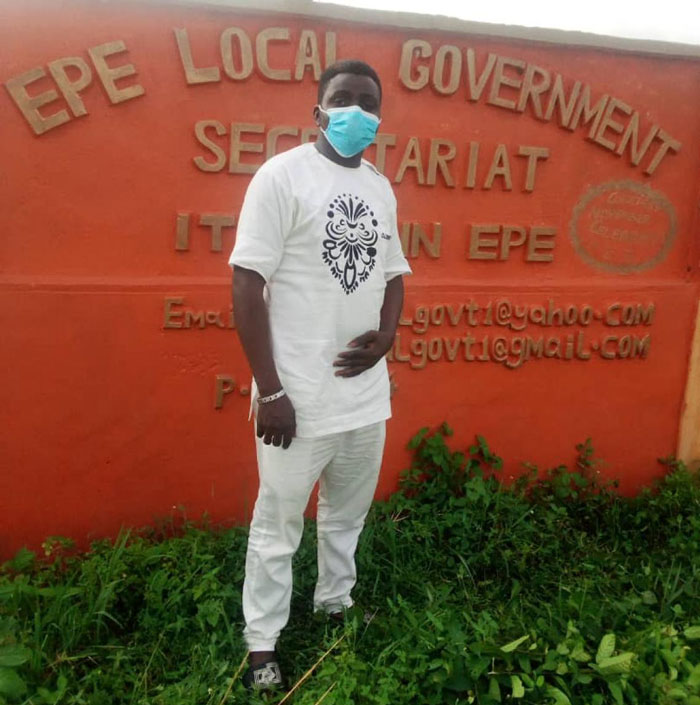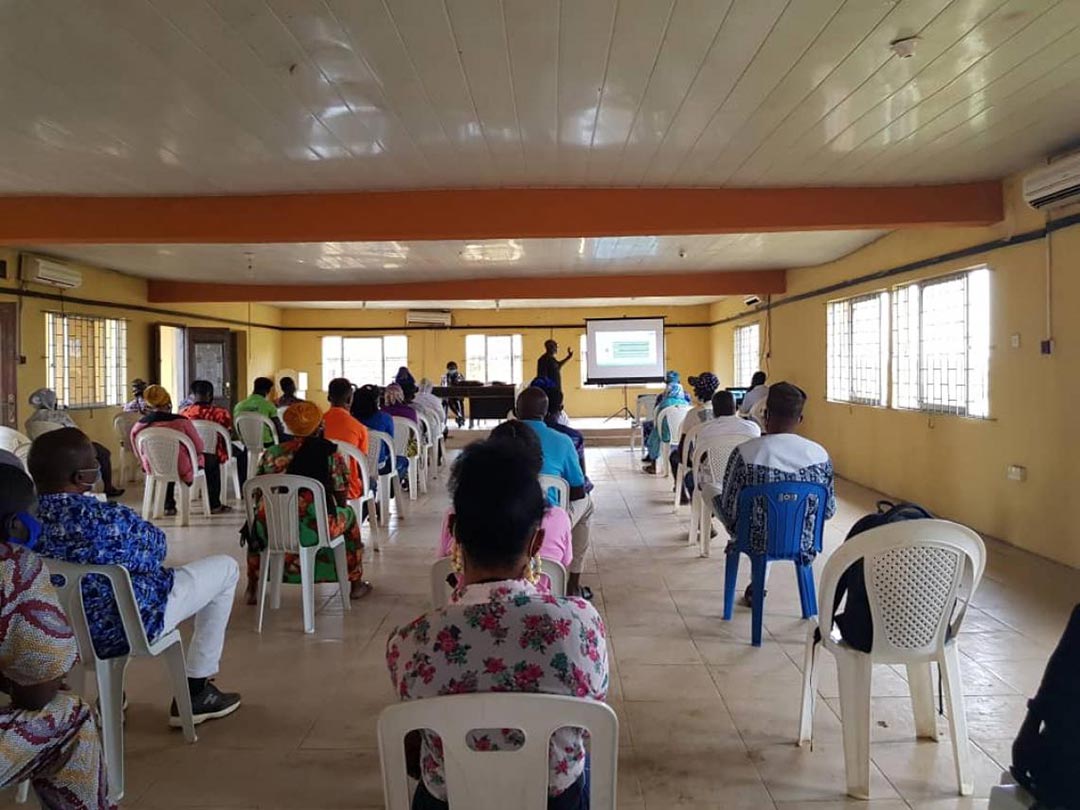Volunteers take lead on contact tracing in hard-to-reach communities
As COVID-19 has overwhelmed the medical system, a group of volunteers in Nigeria is undertaking the task of slowing the disease’s spread within communities.
- 17 November 2020
- 3 min read
- by UNICEF Nigeria

In a time of crisis, it is often necessary for people to take on things they never would have expected to have to do. As COVID-19 has overwhelmed the medical system, a group of volunteers is undertaking the task of slowing the disease’s spread within communities, where misinformation is everywhere and good advice can be tough to find.
Twenty-six-year-old Wasiu, of Epe Local Government Area (LGA) in Lagos State, is one of those trying to make a difference. He was one of 1,028 volunteers from across Lagos at a recent contact training programme held at ita-Marun Epe. There, volunteers learned how to identify symptoms, collect data, and refer identified persons for testing, infection prevention and control. They were also trained in standard precautions for contact tracing.
“Contact tracing training has developed my ability to investigate and identify those who have been exposed to a COVID-19 positive or a confirmed patient, in order to prevent onward transmission,” says Wasiu.
Lagos was the site of the first recorded case of COVID-19 in Nigeria on 27 February 2020, and since then the state has been the epicenter for the disease in the country, accounting for about one third of all confirmed cases.
But along with the disease itself has come a wave of myths, misinformation and fake news leading to mistrust among citizens, health authorities and government across Lagos as around the world. This has made bringing information to people’s front doors crucial to slowing COVID-19’s spread.
Volunteers were drawn from each ward within the LGAs, with a minimum of three volunteers per ward in the Epe LGA. Volunteers were either born in or lived within the ward they represent, thus making them familiar with culture, local language and living conditions of people in the community.
Trained contact tracing volunteers were equipped with the ability to communicate the right information on COVID-19 at the community level, especially on the importance of hand hygiene and washing, using face masks and social distancing. The trainers, supported by federal, state and local government resources, used the train-the-trainer model with volunteers at the national and sub-national levels.

I have learned basic facts about COVID-19, strategies on prevention of COVID-19, who is meant to be traced, and proper reporting data tools to be used on the field
26-year-old Wasiu Gbolahan
“The training will enhance quick identification of both positive and negative cases in order to curb the rate of virus spread,” said Wasiu.
It is hoped these efforts will go a long way in curbing the spread of COVID-19 at the community level, particularly in hard-to-reach areas. UNICEF and other key partners in Nigeria will continue to support the training of community volunteers in contact tracing.

Volunteers at the contact tracing training, Epe, Lagos
“Contact-tracing training is key to supporting the Lagos State Government’s efforts at responding to COVID-19,” said Olumide Akintunde, a UNICEF Communication Assistant based in Lagos.
Since it was anticipated that volunteers would experience challenges within the community while carrying out contact tracing, they were also trained to handle many kinds of requests – some of which they may not be able to fulfil.
“Contacts may request personal protective equipment (PPE) and thermometers to monitor their temperatures daily,” said Wasiu. “The training on contact tracing suggests we educate community members on how to self-isolate within their homes using home-based PPE, and to always use running water and soap for frequent hand washing.”






